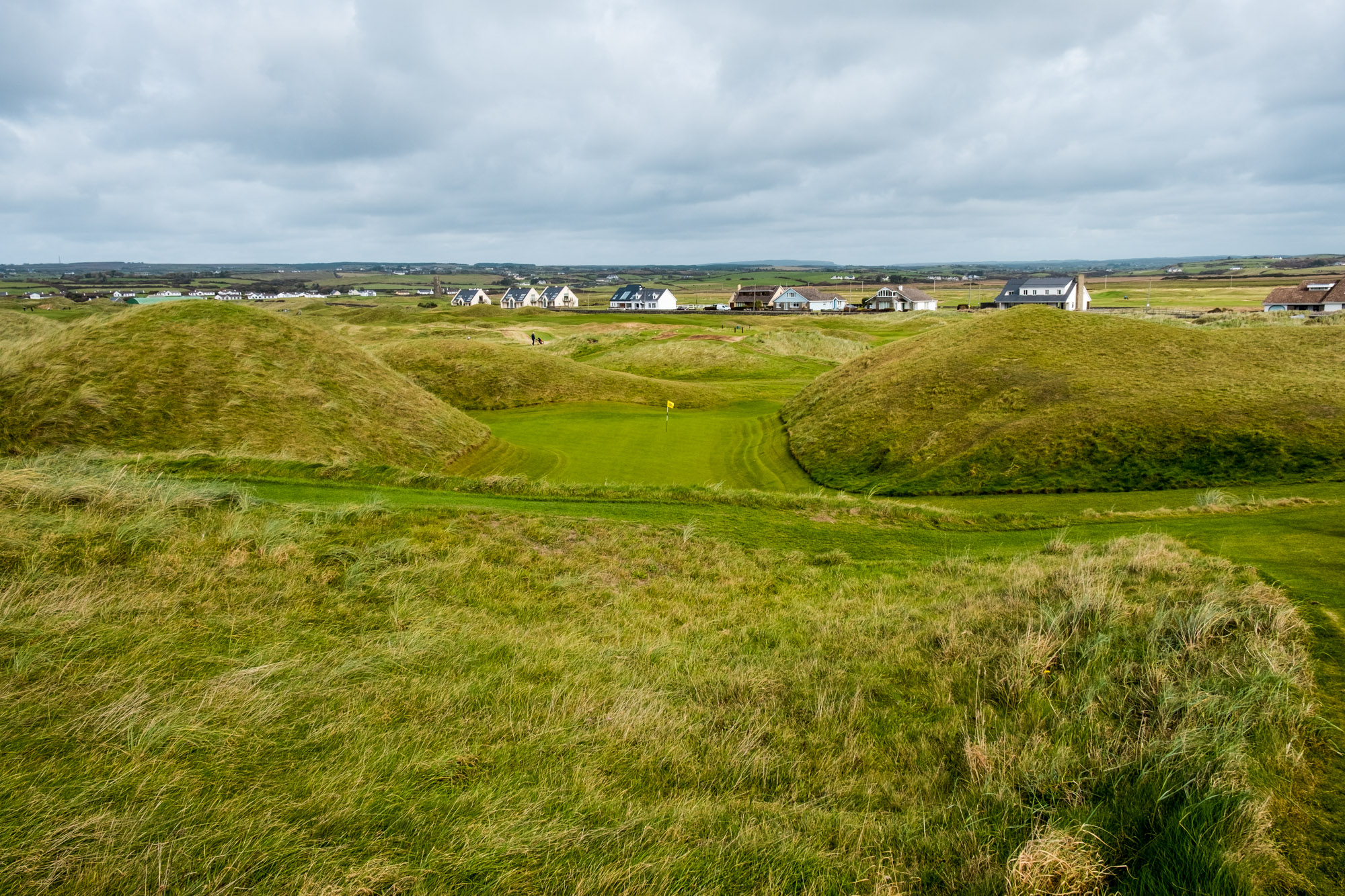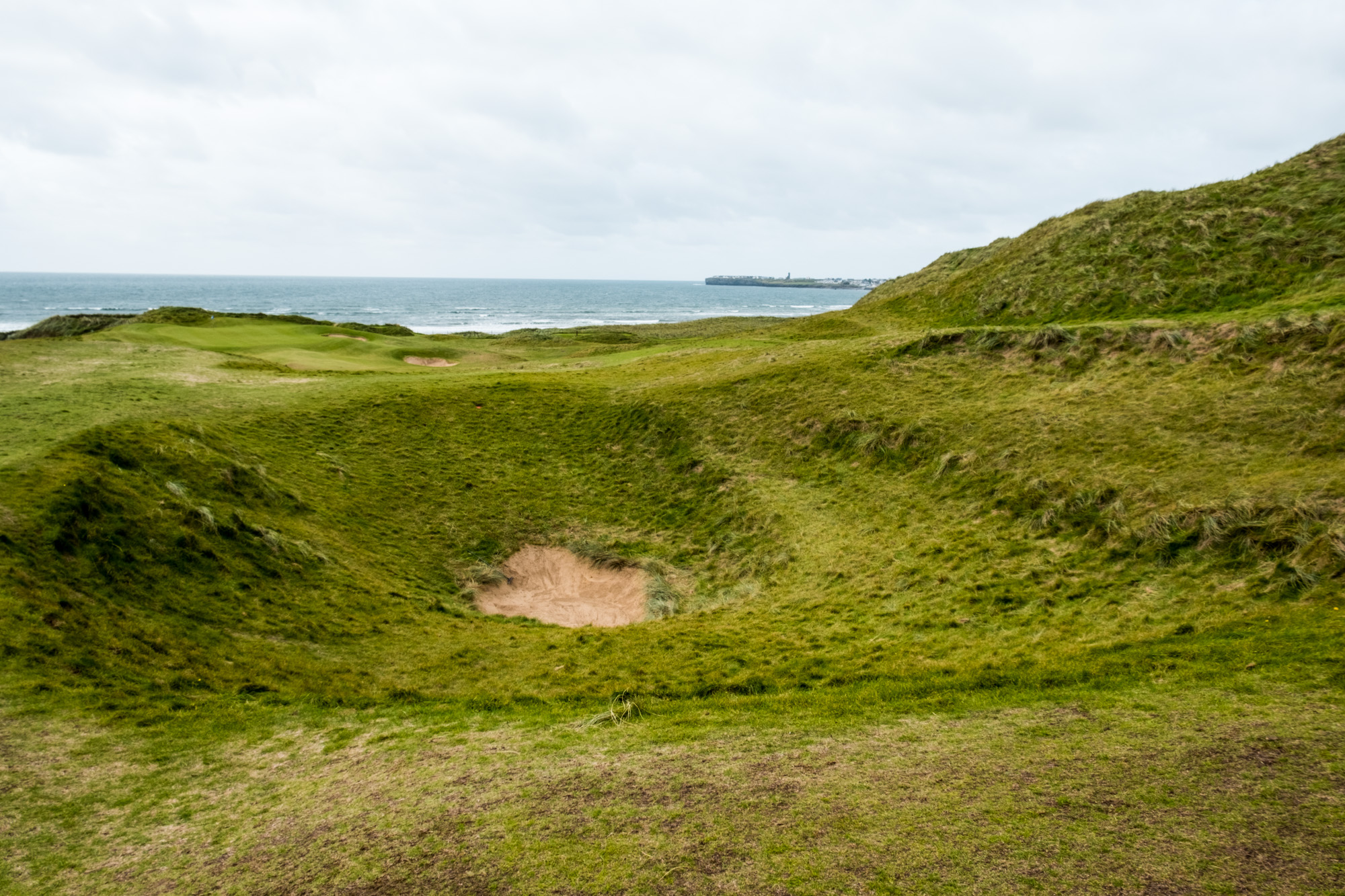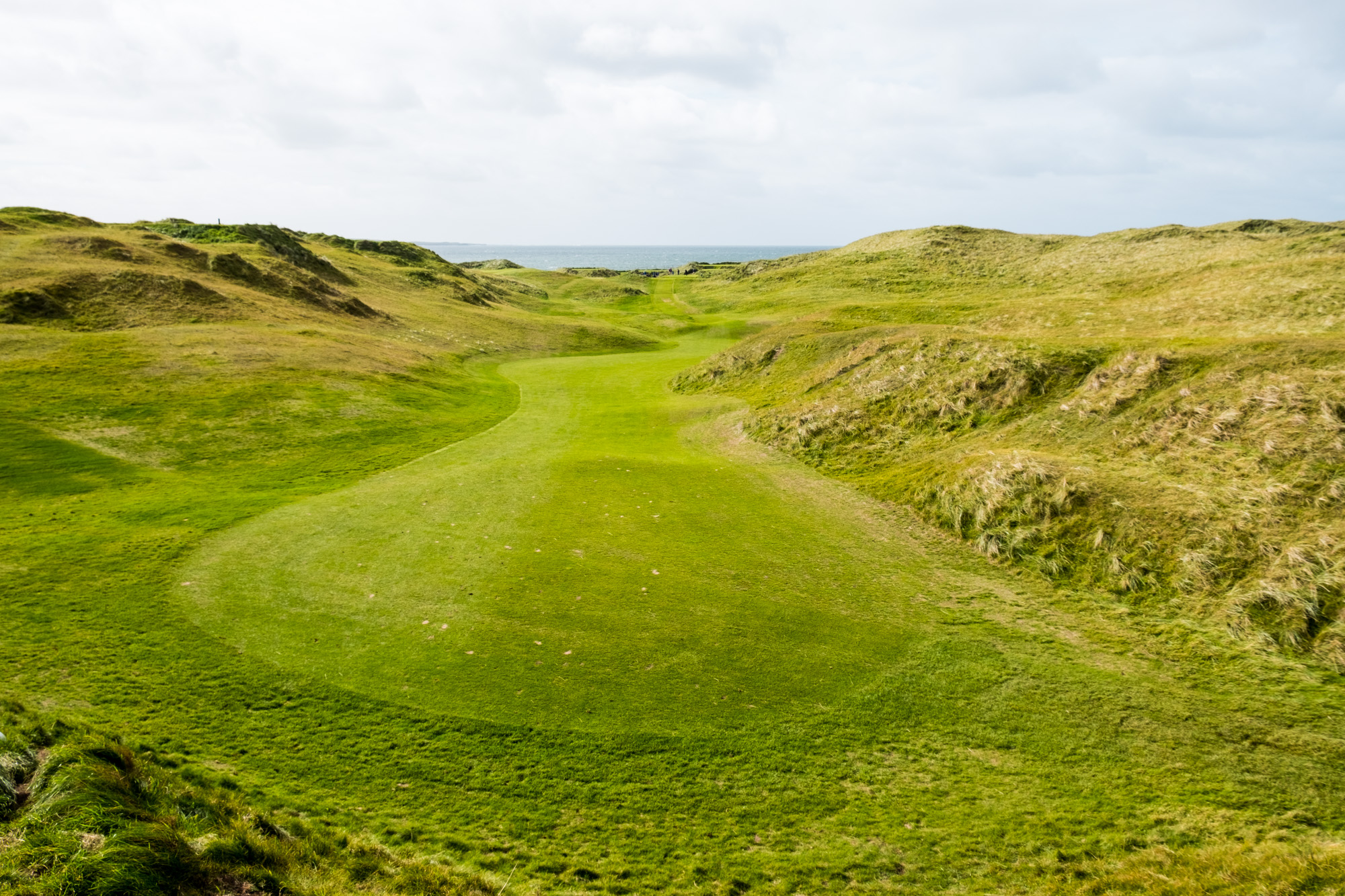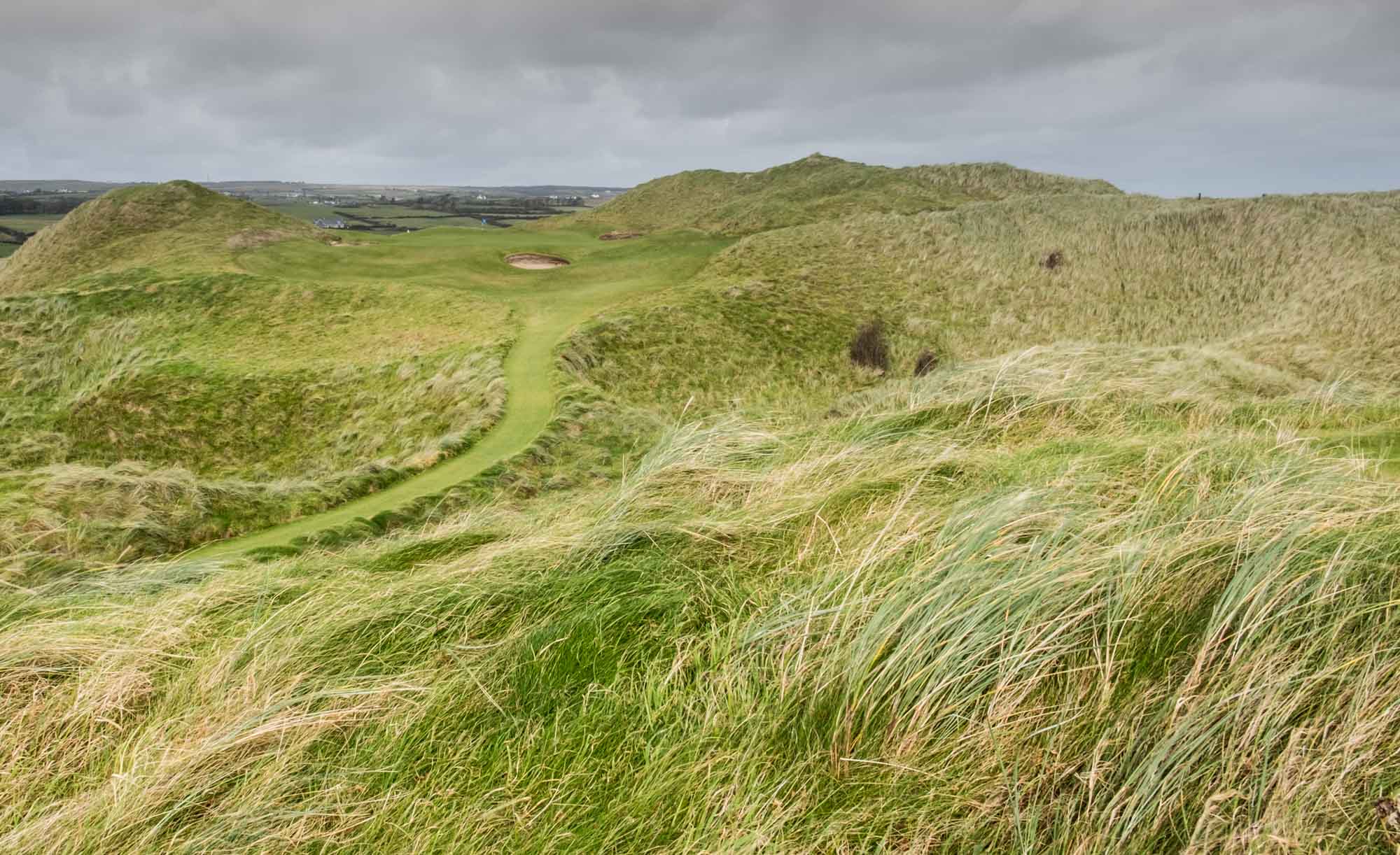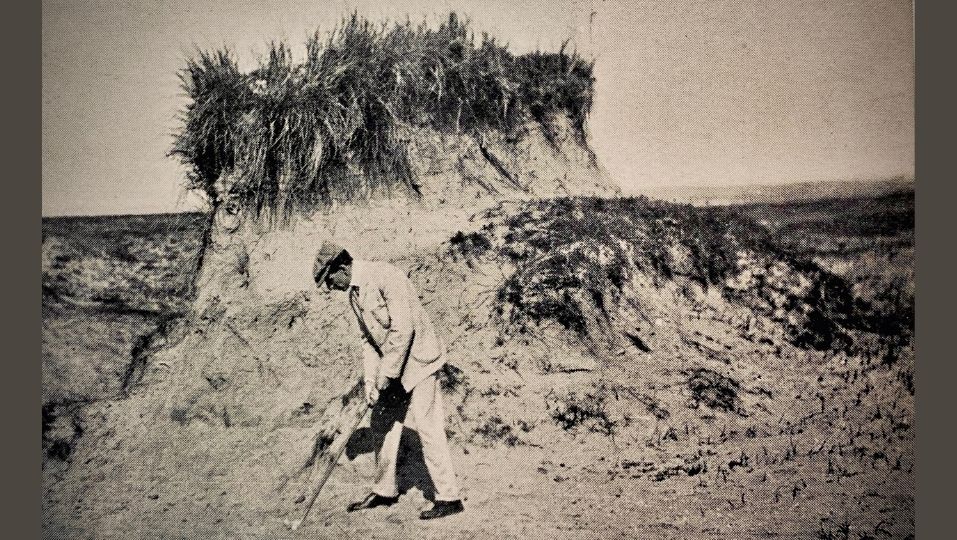Lahinch Golf Club

Overview
Lahinch Golf Club's Hallmarks:
- Incorporation of natural landforms
- Bold, quirky features
- Efficient routing
Holes by Architect
- The 4th and 5th holes are Old Tom Morris designs.
- The 6th and 7th holes are attributed to Charles Gibson.
- The 8th and 11th holes are Dr. Martin Hawtree's designs.
- The remaining holes can be attributed to a combination of all the above.
Dr. Hawtree's work centered on restoring Alister MacKenzie's design.
Golf Course Review
Lahinch Golf Club is a links golf course on the northwest coast of Ireland in County Clare. The Inagh River empties into Liscannor Bay and the Atlantic Ocean with the golden sands of Lahinch Beach providing the backdrop to the world-class golfing destination.
Lahinch Golf Club is an experience. It is rugged, natural, and authentic. The golf? Tamed ferocity & enchanting both quirky & bold. Legends of golf course architecture have laid out a course over some of the best links land the world has to offer. The craft of Old Tom Morris, Alister MacKenzie, and Martin Hawtree has been equal to the site they had to work with. The result is nothing less than mesmerizing. It is world-class and rightly deserves its spot in the discussion of the world's best.
Lahinch Golf Club History
The original 18 holes at Lahinch Golf Club were laid out by Old Tom Morris in 1892. By 1902, a report of the course mentioned 10 holes were in the dunes by the sea and the other eight were more inland. The outward nine measured 2960 yards and the inward nine measured 2405 yards for a total of just 5365 yards. After the 10th hole, the course continued inland across the Liscannor Road. Of note, both Klondyke and Dell were in play alongside another one-shot hole of 230 yards called Pons Asinorum.
In 1904, significant changes were made to Lahinch Golf Club. The opening hole remained untouched. There was a new stretch of holes from 3 to 5. Klondyke and Dell became the then 6th and 7th holes. The 8th combined the former 5th and 6th holes from Old Tom Morris. The 9th was new. The back nine was almost completely unrecognizable. Changes incorporated much of Old Tom Morris' greens, tees, and bunkers. It is still unknown who was responsible for such drastic changes to the original layout.
Change was again afoot in 1907 when Charles Gibson was invited to advise. The current 6th and 7th holes have turned out to be his lasting legacy at the course. In 1927, Alister MacKenzie was invited to render judgment and recommend improvements. The tiered greens are a notable feature as well as the current 9th hole.
In 1999, Martin Hawtree re-routed 4 holes and built two new holes, the 8th and 11th. 16 tees and 14 greens were rebuilt.
Lahinch Golf Club Hole By Hole
The 1st hole gently ascends an incline where the green is situated on the edge of a landform platform. The 2nd hole begins teeing off the same platform almost back to sea level. The 3rd works its way back up to the top of the platform through a blind tee shot. Although back and forth, the three holes in no way resemble each other nor are any of the requisite shots repeated.
The next three holes make up one of the quirkiest series of holes in golf. The 4th crosses the entire property, from the seaside to the boundary road interrupted by Klondyke, a massive dune smack dab in the middle of the fairway. With no option but to go over it, it is the epitome of a blind shot. It breaks all the rules, and it is a cracker.
Following Klondyke is Dell, the par 3 - 5th. Dell is Klondyke's little brother. Obscuring the majority of the green, you must carry the dune. In both instances, the build-up to the shot and the expectation following add an exhilarated rush that climaxes with jubilation or misery.
The 6th begins with another blind tee shot. After reaching the top of the ridge, you must carry one of the most substantial natural depressions on a golf course to reach the green. The hole, called Paradise, quickly becomes hell if you find it.
In all three instances, the brilliance of not only using but directly involving these features in play is a stroke of genius. The other interesting feature is the routing of these holes. Running perpendicular to the first three, the next three bisect the entire property. A par five is laid out from the seaside to the roadside. Then, from the road back to the sea employing, a par three and later a par four.
After playing back to the sea, you play alongside it, the 7th being reminiscent of the third. The 8th is a visually stunning one-shotter whose infinity green is deceptively long and has hidden bunkers left and right. The beauty of this hole will steal not only your breath but your heart as well.
The Inward Nine at Lahinch Golf Club
9 plays back inland and is a superb example of strategic golf using natural topography. A ridge runs diagonally across the hole, creating a shelf that affords a plethora of options. The ideal line is left but requires the longest carry. Fail to reach the shelf, and you're left a blind second into a long, narrow green with a massive drop on the left and bunker front right. Play it safe, and you've left yourself no option but to lay up and try to save par with two solid attempts at a pitch and putt due to the orientation of the green.
The back nine at Lahinch Golf Club is equally marvelous. 10 eases you out to the far side of the property. The short par three 11th, with no bailouts and wind factoring significantly, is a cracker with the Atlantic Ocean as its backdrop.
The downhill 12th is a three-shotter that runs along the estuary. The third par five of the round, it is probably the most scenic. Dough Castle sets the line from the tee in the distance.
A high risk and reward par four comes next on the 13th. Aptly named Mine, it could be a disaster if not successfully executed. The 14th requires a straight tee-ball, setting up an ideal second between two dunes called "The Twins." Characteristically, natural land formations are again incorporated into the design. The 15th is a long par four. The elevated tee on 16 gives you a view of the estuary and a little help to a green guarded well on all sides. The last of the par three's, it completes a set of one-shot holes which would stack up well against any.
17 and 18 are perhaps the least arduous of the holes. They are engaging closing holes that complement the ones proceeding them. They demand precise tee shots and careful thought to your approach. Perhaps their most significant threat is the potential lowering of the guard to the uninitiated. If you've survived to the very end, merely ending up on the left side of Eighteen could be a card wrecker.
Lahinch Synopsis
There are blind shots, forced carries, some substantial elevation changes and lots of quirkiness. Despite all of this, it is genius and easy to grasp. Although cerebral it is understandable the first time you play it. There is a bit of everything: Idyllic par three's, a variety of par 4's and four distinctive par five's. The green complexes are superb. Course conditioning? Exemplary.
Why does Lahinch Golf Club stand out? The routing is top drawer. Views are given of the bay and estuary throughout but not all at once. Unusual, natural landforms are used with exquisite delight, especially on 4, 5, 6 & 14. Every inch of the parcel of land is used to its full potential, but it doesn't feel cramped. There are twenty holes and two practice greens - an absolute masterclass in maximum efficiency of land use. Add to this the conditioning, world-beating green complexes and stunning beauty, Lahinch Golf Club is a pilgrimage every golfer needs to experience. You'll be richer for it and understand the spirit of the game at another level.
Lahinch Golf Club Hole by Hole
Spend some time looking at an interactive map with hole-by-hole flyovers.


Lahinch Golf Club - Videos
watch the lahinch golf club promo video
No Laying Up visits lahinch golf club

Featured Architect: MacKenzie, Alister
As taken from his book, Golf Architecture, Alister MacKenzie felt the following were essential: The course, where possible, should be arranged in two loops of nine holes. There should be a large proportion of good two-shot holes and at least four one-shot holes. There should be little walking between...



